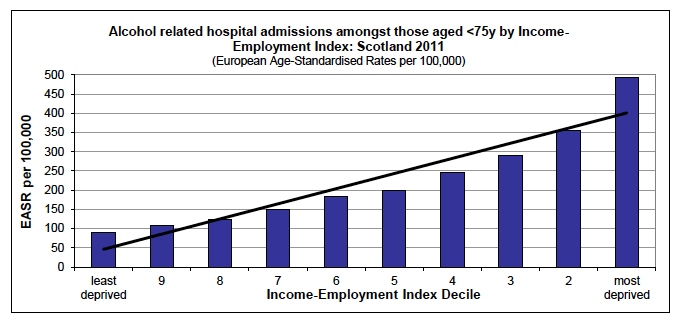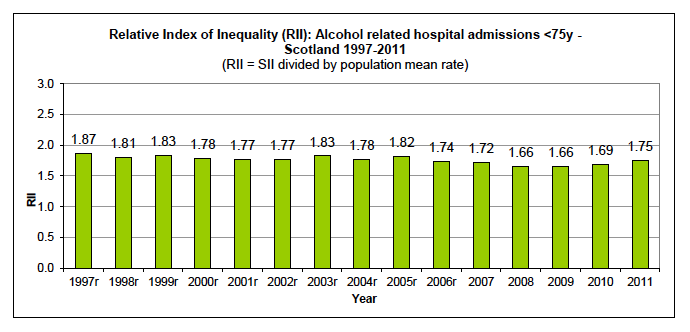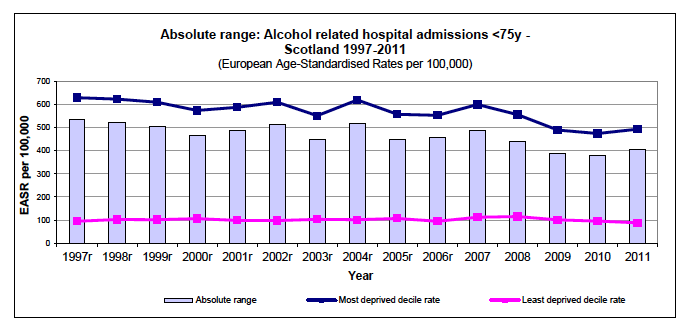Long-term Monitoring of Health Inequalities: Headline Indicators - October 2013
Annual update of the 'Long-term Monitoring of Health Inequalities' headline indicators.
This document is part of a collection
Alcohol - first ever hospital admission aged under 75 years
Summary
- The level of absolute inequality has fallen since 1997, while relative inequality has remained stable over the same period.
Between 1997[8] and 2011, rates of new hospital admissions for alcohol-related conditions among those aged under 75 years fell by 16% to around 11,000 new cases in 2011. These types of admissions are more common in deprived areas - 493 per 100,000 population compared to 89 per 100,000 population in areas of low deprivation. Relative inequality has remained broadly stable over time. There has been a decrease in absolute inequality since 1997, mainly caused by a decrease in the admission rate in the most deprived decile from 629 per 100,000 population in 1997 to 493 per 100,000 population in 2011.
Inequalities gradient in the most recent year available

Relative Index of Inequality (RII) over time

Absolute range over time

Scale / Context
| Number of new cases |
Target population size |
Rate per 100,000(EASR) |
|
|---|---|---|---|
| 1997r |
12,447 |
4,740,269 |
266.3 |
| 1998r |
12,762 |
4,729,975 |
271.3 |
| 1999r |
12,645 |
4,721,298 |
268.7 |
| 2000r |
12,189 |
4,708,667 |
259.1 |
| 2001r |
12,844 |
4,703,661 |
271.3 |
| 2002r |
12,836 |
4,690,508 |
270.2 |
| 2003r |
12,201 |
4,690,603 |
255.0 |
| 2004r |
13,325 |
4,706,922 |
275.2 |
| 2005r |
12,515 |
4,718,403 |
257.4 |
| 2006r |
12,665 |
4,734,676 |
259.4 |
| 2007 |
13,628 |
4,755,963 |
279.0 |
| 2008 |
13,161 |
4,775,321 |
266.2 |
| 2009 |
11,833 |
4,795,479 |
237.6 |
| 2010 |
11,175 |
4,816,465 |
222.7 |
| 2011 |
11,042 |
4,841,726 |
223.6 |
Contact
Email: Craig Kellock
There is a problem
Thanks for your feedback